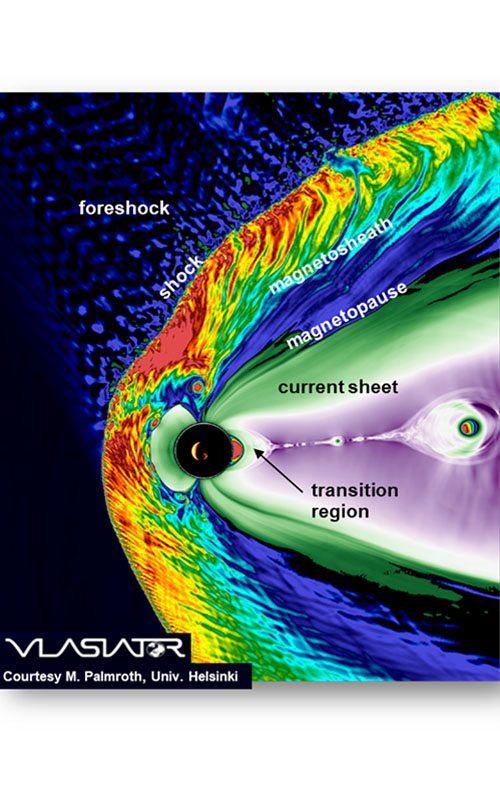SCIENCE
The Science of Plasma Observatory
Plasma energization and energy transport are ubiquitous in cosmic plasmas. The Earth’s Magnetospheric System is a key example of a complex and highly dynamic cosmic plasma environment where massive energy transport and plasma energization occur and can be directly studied through in situ spacecraft measurements.
Despite the large amount of available in situ observations, however, we still do not fully understand how plasma energization and energy transport work.
In situ observations, theory and simulations suggest that the key physical processes driving plasma energization and energy transport occur where plasma on fluid scales couple to the smaller ion kinetic scales, at which the largest amount of electromagnetic energy is converted into energized particles.
Remote observations currently cannot access these scales, and existing multi-point in situ observations do not have a sufficient number of observation points.
Plasma Observatory will be the first mission having the capability to resolve scale coupling in the Earth’s Magnetospheric System through measurements at seven points in space, covering simultaneously the ion and the fluid scales where the strongest plasma energization and energy transport occurs: the foreshock, bow shock, magnetosheath, magnetopause, magnetotail current sheet, and transition region.

Plasma Observatory scientific questions are:
(Q1) How are particles energized in space plasmas
(Q2) Which processes dominate energy transport and drive coupling between the different regions of the Earth’s Magnetospheric System?
Plasma Observatory will answer these questions by resolving scale coupling in plasma processes such as shocks, magnetic reconnection, turbulence, plasma instabilities, plasma jets, field-aligned currents and their combination leading to transformative advances in the field of space plasma physics.